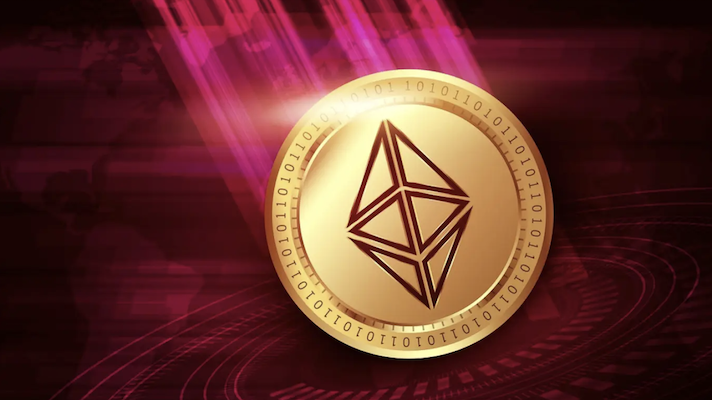Join Our Telegram channel to stay up to date on breaking news coverage
A optimistic narrative has been building for the Ethereum smart-contract platform in anticipation of the long-awaited switch from a proof-of-work to a proof-of-stake consensus method. For one very important group, that’s bittersweet: after the merger, Ethereum miners will be left with enormous amounts of computer hardware that will be incredibly less valuable.
However, not all miners are ready to let go of it so peacefully. Chandler Guo, a longstanding Ethereum miner and investor, tweeted “ETH PoW coming soon” on July 27. This was Guo’s pledge that he would lead other miners in continuing to maintain the current proof-of-work Ethereum chain following the system change known as the Merge.
A sustained ETH PoW chain has several valid justifications, and if it were to happen, it would undoubtedly be an interesting experiment. But there are many more reasons to believe that the chain won’t last in the long run, as well as other methods that dishonest bad actors could take advantage of an ETH PoW continuation.
Spending twice throughout the entire blockchain
To comprehend both the promise and the risk of a post-merge “ETH PoW” chain, let’s think about how the impending Merge will function and what will be left behind. In general, the most important address balances from the historical state of the Ethereum chain at the time of the Merge will be moved to the new proof-of-stake consensus environment.
However, the proof-of-work miners will continue to provide state histories up until a nanosecond before the Merge. Using proof-of-work, those miners could quite easily carry on accepting transactions and growing their own replica of the Ethereum chain. It also means that users will continue to receive tokens that closely resemble ETH but only exist on the degraded proof-of-work chain as rewards from the pre-Merge PoW algorithm.
Similar to this, just prior to the Merge, all ETH holders will have access to tokens on both chains. Although using them may require some technical expertise or specialized tools, many default programs, such as MetaMask, will probably delete connectors with the previous chain to avoid user confusion. Importantly, only self-custodial holders are expected to maintain ownership of their ETH PoW tokens. Many custodial exchanges are probably not going to let users access their tokens on the ongoing proof-of-work chain.
However, one important (though frequently unstated) objective of Chandler Guo and his ETH PoW initiative would be to raise enough awareness of ETH PoW that exchanges list it and allow trading of it as a token distinct from ETH itself. While decentralized exchanges would probably offer ETH PoW trading sooner, maintaining widespread market interest would require mainstream centralized exchange listings.
For proponents of ETH PoW, this is where the money is at its most basic level. It will effectively guarantee that there is at least some market value for both the tokens they presently own and, perhaps more importantly, fresh ETH PoW tokens they mine post-Merge, if they receive enough exchange listings.
In case something goes horribly wrong
Is there any purpose for a proof-of-work version of Ethereum to continue to exist, other than to discover a price for something that has lost most of its value overnight? Of course, it has nothing to do with the real usefulness of ETH PoW. What are the possibilities that ETH PoW will actually see consumer demand, resulting in a longer-term steady value or increase?
For continuing the proof-of-work chain as “ETH PoW” (or whatever they ultimately decide to call it, because “ETH PoW” is really a terrible name), there are several non-financial arguments. There will be some uncertainty, justified or not, regarding the stability of the new Ethereum chain following the Merge. There is a risk that users, apps, and even assets (see below) will return to the PoW chain if the Merge genuinely goes horribly wrong. Positions on the “old” chain could serve a similar function to insurance in this scenario.
That likelihood is vanishingly small, to be very clear. At this time, there have been multiple successful Ethereum test merges. But the possibility is not nil.
In the long run, there are still some questions about proof-of-viability stake’s as an Ethereum security scheme. Most specifically, there are persistent worries that proof-of-stake promotes centralization over time by rewarding those who are already large holders. Another perceived concern of proof-of-stake consensus techniques is governance manipulation. If these or other faults develop over time, participants may decide to switch back to Ethereum’s proof-of-work model, which would increase the value of positions there.
Cut tethers and empty circles
The ETH PoW chain, however, won’t have much real value for a number of greater and more obvious reasons. In fact, it’s likely to be such a disorganized and shattered environment that it might even be said to have no value at all.
Above all, the majority of the systems and assets that users of Ethereum actually use would basically cease to exist on the branched proof-of-work chain. Entities like Circle, for example, won’t honor stablecoins marked on the degraded chain. That would be sufficient to effectively make DeFi systems on ETH PoW ineffective. (DeFi, short for decentralized finance, refers to a collection of apps that offer financial services directly to consumers.)
The decentralized pricing oracles that keep DeFi platforms effective, particularly for trading programmable assets, would be broken, which is a much bigger issue, especially during the time immediately following the Merge.
The ETH PoW concept also faces a second set of problems. Ethereum’s designers included a time bomb to encourage the switch to proof-of-stake. After the Merge, this ‘difficulty bomb’ is supposed to make mining the chain virtually impossible, slowing down all transactions.
The ETH PoW camp would need to unite behind yet another fork, this one to remove the difficulty bomb, in order to carry out its plan. In the absence of the Ethereum Foundation and other leaders who frequently provide direction on significant Ethereum upgrades, this could prove to be quite difficult.
Theoretically, the ETH PoW group could also collaborate with stablecoin creators and oracle upkeep staff to bring operational versions of those products back to the ETH PoW chain. However, doing all of this would cost a lot of money and coding resources. The proponents of ETH PoW may have plenty of cash to spend, but finding engineers to work on a defunct remnant may be difficult given the severe shortage of qualified Ethereum developers.
Another factor raising doubts about ETH PoW is the existence of an alternative Ethereum that is based on proof-of-work. Its name is Ethereum Classic (ETC), and it was created following the infamous DAO Attack in 2016, which caused the Ethereum chain to be rolled back.
In reality, the fact that ETC just saw a significant rally and has experienced rallies prior to earlier Ethereum upgrades supports the notion that there is some perceived value in a “backup” version of Ethereum.
Nevertheless, since its divorce from Ethereum, Ethereum Classic has only slightly increased in popularity among users. Even after its recent surge, ETC still only exchanges at 10% of ETH’s value. Given that, it is unclear why two proof-of-work versions of Ethereum would be necessary.
Strangest of all, Kevin Guo, the person currently in charge of the ETH PoW strategy, was a vocal proponent of ETH Classic, at least rhetorically. He predicted that “Ethereum Classic will replace Ethereum Core” at the time, full of optimism.
Maybe the second try will be the lucky one.
The wackiest trade in the world
I don’t think an ETH PoW fork will likely develop into a thriving or even fully sustainable ecosystem given all the obstacles. However, if it proceeds in even the most curtailed form, it will set off a wave of highly irrational speculative trading as people attempt to benefit from the “free” tokens that the fork leaves behind.
The issue of value distribution between the two chains is one straightforward and practical framework for traders thinking through their holdings. According to Kevin Zhou at Galois Capital, for instance, 4% of Ethereum’s value may go to the new ETH PoW chain while 96% of Ethereum’s value will remain with the new PoS chain.
Beyond that, profiting from a hypothetical ETH PoW trade would only be a game for those with the highest level of technical proficiency. The change will probably destroy practically all of the trading infrastructure that regular traders are accustomed to, as explained in a recent, outstanding BitMEX study article.
BitMEX claims that in order to make an ETH PoW play, severe efforts, up to the significant undertaking of running your own complete Ethereum node, will be required. BitMEX also lays forth some intriguing tactical alternatives for anyone who is not immediately alarmed by that notion.
As a trader who is categorically not a specialist, I have a very straightforward and gloriously lazy idea for a hypothetical ETH PoW fork. To make sure I have the keys to both chains, I’ll start by transferring all of my ether away from exchanges and into personal wallets. When a centralized exchange lists it, I’ll hold onto my ETH Proof-of-Work.
The majority of it will then be dumped, and I’ll either buy myself a sandwich or a gold watch, and I’ll be content with either.
Greetings from ETHPVP
As always, a major event provides scammers with a great opportunity, and beginners face equally substantial risks on this front. Please be mindful that there should be very little justification for any ETH PoW enthusiast or organization to request funding for anything. The PoW branch should, after all, have a thriving community and natural demand to support its development if it was a smart idea.
The BitMEX report also includes what I believe to be the most accurate evaluation of the ETH PoW trade that you will find anywhere:
“Ethereum maxis should actually (somewhat perversely) want the ETH PoW chain to survive, at least for a bit, so that they can dump ETH PoW coins into the market and get more ETH (or US$). That way they can make money from what they consider to be ‘stupid’ ETH PoW supporters, before ETH PoW dies a slow death over the next few years. Therefore, many people may try to sell their ETH PoW as fast as they can and the price may be weak.”
We are not sure if this is the true motivation of ETH PoW supporters. But the mindset of many traders who participate will undoubtedly be important.
Related
- Ethereum Merge Will Attract Institutions and Create Staking Boom
- Google seems excited about the Merge as it now shows a time
- Binance announces it will possibly support the Ethereum PoW fork
Join Our Telegram channel to stay up to date on breaking news coverage



